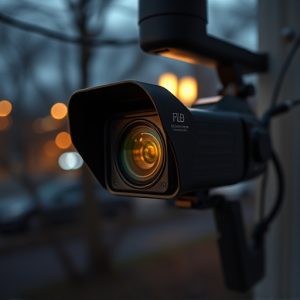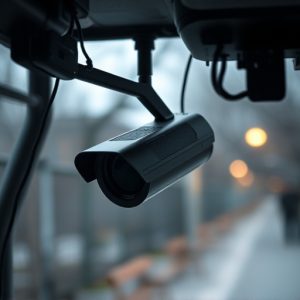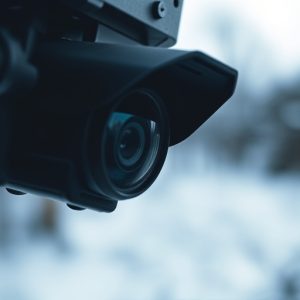Unveiling Hidden Spys: AI-Integrated Spy Cameras in Rental Properties
The integration of Spy Camera Artificial Intelligence (AI) in rental properties offers enhanced secu…….
The integration of Spy Camera Artificial Intelligence (AI) in rental properties offers enhanced security while presenting privacy challenges. Landlords must balance property integrity with tenant rights, adhering to regulations through clear lease disclosures and reasonable notice before activating AI surveillance. These advanced AI-powered cameras, disguised as everyday items, provide motion detection, face recognition, and real-time alerts, but tenants can protect their privacy by staying informed, being vigilant, conducting regular inspections, and using specialized tools to detect covert surveillance devices.
- Understanding Legal Implications and Tenant Rights
- Spy Cameras: Types and Artificial Intelligence Integration
- Common Hidden Placement Spots in Rental Properties
- Detecting and Preventing Secret Surveillance: Tips for Tenants
Understanding Legal Implications and Tenant Rights
In the realm of rental properties, understanding the legal implications and tenant rights surrounding secret surveillance spots is paramount. While landlords have a legitimate interest in maintaining security and ensuring property integrity, they must adhere to stringent regulations that safeguard tenants’ privacy. The integration of Spy Camera Artificial Intelligence (AI) systems, for instance, raises complex ethical and legal questions. AI-powered cameras can offer advanced features like facial recognition and real-time data analysis, but their deployment without tenant knowledge or consent may violate privacy laws.
Tenants have the right to expect a certain level of privacy within their rental spaces. Any installation of surveillance equipment should be disclosed clearly in lease agreements. Moreover, tenants should be provided with reasonable notice before any camera systems are activated. Legal ramifications can include financial penalties for landlords who infringe upon tenant privacy, leading to a delicate balance between security measures and individual freedoms.
Spy Cameras: Types and Artificial Intelligence Integration
Spy cameras, also known as hidden cameras, have evolved significantly with the integration of artificial intelligence (AI) technology. These advanced devices can blend seamlessly into their surroundings, often disguised as everyday objects like smoke detectors, power outlets, or even houseplants. AI-integrated spy cameras possess remarkable capabilities; they can detect motion, recognize faces, and send alerts to users in real time via smartphone apps. Some models even capture high-definition video, ensuring clear images for accurate surveillance.
The combination of spy cameras with AI brings several advantages. For instance, machine learning algorithms can analyze patterns, differentiate between people and objects, and reduce false alarms. This technology enables more efficient and intelligent monitoring, allowing homeowners or property managers to stay informed without constant vigilance. With their versatile applications, these smart surveillance devices offer enhanced security for rental properties, providing peace of mind for both landlords and tenants alike.
Common Hidden Placement Spots in Rental Properties
In rental properties, secret surveillance spots often go unnoticed by tenants, taking advantage of modern technology like spy cameras integrated with artificial intelligence (AI). Common hidden placement spots include wall-mounted mirrors, which can be thin, unassuming panels concealing high-tech camera systems. Another popular location is behind picture frames, where tiny cameras capture activity without drawing attention. AI algorithms enhance these spy cameras’ capabilities, allowing them to detect motion, differentiate between people and objects, and even recognize familiar faces.
Light switches, smoke detectors, and electrical outlets are also clever hiding places for surveillance equipment. These everyday items can be modified to include hidden cameras, gathering data discreetly. With advancements in AI integration, these spy cameras can now analyze live feeds, send alerts for suspicious activity, and record footage for later review—all while maintaining a virtually invisible presence within the rental space.
Detecting and Preventing Secret Surveillance: Tips for Tenants
Detecting and preventing secret surveillance in rental properties is a growing concern for tenants, especially with advancements in technology. One of the most effective tools against covert surveillance is staying informed about potential methods used by perpetrators. Tenants should be vigilant about any unusual devices or hidden spots that could indicate secret camera setups. For instance, spy cameras often use artificial intelligence (AI) integration to detect movement and record video discreetly. By keeping an eye out for these advanced technologies, tenants can identify potential breaches of privacy.
Regular inspections of rental spaces, including walls, ceilings, and even furniture, can help uncover hidden cameras. Using specialized tools or apps designed to detect AI-based spy cameras can also be beneficial. Additionally, tenants should remain cautious when granting access to their homes and ensure that only trusted individuals with legitimate reasons are permitted entry. Regularly updating security measures and keeping up-to-date on the latest surveillance trends will empower tenants to protect their personal spaces.
While the use of spy cameras and artificial intelligence integration in rental properties may raise concerns about tenant privacy, understanding legal boundaries and proactive awareness can empower individuals to protect their personal spaces. By being vigilant and informed about common hidden placement spots, tenants can take measures to detect and prevent secret surveillance, ensuring a safer and more secure living environment.


